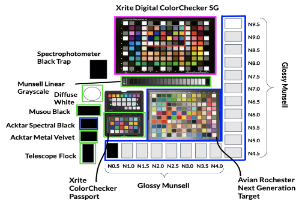
The capability for a camera to produce a color-accurate high dynamic range image is based upon its capture of luminance within a scene as well as the targets chosen to create the color transformation matrix. The wide-ranging luminance within a scene is an important part of cultural heritage documentation to appropriately capture an object's appearance. In addition, color accuracy is critical to documenting cultural heritage appropriately. This research compares prosumer and mobile phone cameras for cultural heritage documentation using single exposure and high dynamic range images. It focuses on the evaluation of color characterization process, color reproduction quality, and generation of the scene. This was done by using two types of prosumer cameras and two types of mobile phone cameras, at 800 lux with a wide range of color targets with various surface textures, matte, semigloss, and glossy. It was found that for creating color calibration matrices, a single exposure outperformed the one created from fusion of multiple exposure images. Additionally, including an extended achromatic scale along with the traditional Macbeth colors as part of the training data for the color calibration matrix may increase color accuracy for different cameras and the samples in the scene.
Leah Humenuck, Mekides Assefa Abebe, "Evaluating Color Transformation Quality and Accuracy of Prosumer and Mobile Phone Cameras for High Dynamic Range Cultural Heritage Documentation" in Electronic Imaging, 2024, pp 273-1 - 273-6, https://doi.org/10.2352/EI.2024.36.9.IQSP-273
 Find this author on Google Scholar
Find this author on Google Scholar Find this author on PubMed
Find this author on PubMed